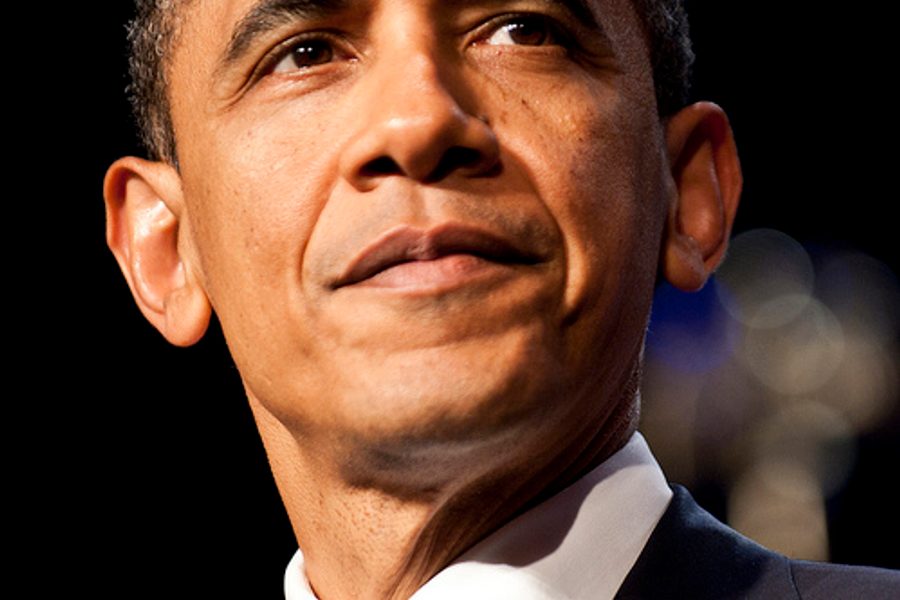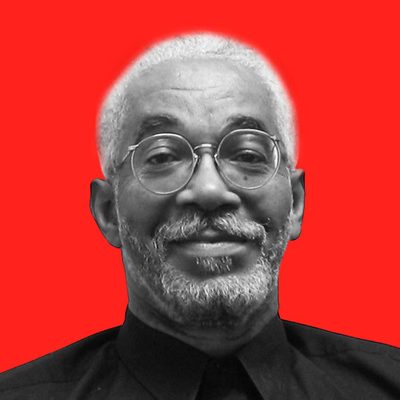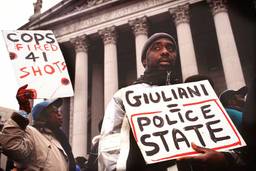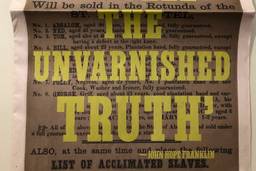
Barack Obama wowed them with his speech during the Democratic National Convention. Not only is he likely to make history as only the third black U.S. senator elected since Reconstruction; pundits already are touting his presidential possibilities. With his probable electoral victory this November, Sen. Obama will join a number of African-American men who are making a real mark on American culture.
Obama’s stage is politics. Black men are exerting their influence in every other nook and cranny of American life — cinema, athletics, media, medicine, theater. These are important milestones, but we can’t let them obscure a more troubling assessment of black men’s status.
It’s an “emerging catastrophe,” New York Times’ columnist Bob Herbert wrote on July 19. And he’s not alone in invoking such urgent language. Many experts are warning that black men are in the midst of a social crisis that Americans seem eager to ignore.
“Ignore” may be the wrong word. The media focus relentlessly on one aspect of this crisis: crime. But that focus is from the “if it bleeds, it leads,” angle. The street crime that captures so much media attention is just the effect of a long list of causes. This crisis has many components — high unemployment, under education, poor healthcare, inadequate housing — that are not quite as media friendly.
Herbert’s Times column highlighted a study by Andrew Sum, of Boston’s Northeastern University, that found “by 2002, one of every four black men in the U.S. was idle all year long.” And this unemployment rate of at least 25 percent did not include homeless men or those in jail or prison. “It is believed that up to 10 percent of the black male population under age 40 is incarcerated,” Herbert writes.
That study had a national focus, but things are even worse in some urban centers. In Chicago, for example, the urgency of the situation prompted three Illinois Democrats — Reps. Danny K. Davis, Jesse L. Jackson Jr. and Bobby Rush — to convene a State of the African American Males Conference in June. In the press release announcing the success of the conference, organizers asked a number of questions:
“Why are more than 50 percent of African-American males between the ages of 16 and 22 out of work and not in school? Why are 87 percent of juvenile parolees African-American males? Why are 60 percent of adult parolees African-American males? Why have only 38 percent of black males graduated from Chicago high schools since 1995, while 62 percent have dropped out?” Most of those numbers pertain to Illinois and Chicago, but also echo the stats of other urban centers.
Earlier this year, the Community Service Society of New York released a report, “A Crisis in Black Male Employment,” that found only 51.8 percent of black men between the ages of 16 through 64 were employed from 2000 to 2003.
But issues of criminal justice are perhaps the most troublesome aspects of this crisis. According to Justice Department figures, 12.9 percent of black males ages 25-29 were in prison or jail; for white men in the same age group the number is 1.6 percent. These racially disparate incarceration rates influence public perception of black men and debilitate other aspects of black community life.
The corrections complex occupies too much space in African-American culture and long has exerted disproportionate influence on the lives of young black people. Long lists of statistics detail the depths of this crisis, but just one — the U.S. Justice Department projects that 32 percent of African-American men born in 2001 will spend time in prison — is enough to reveal its debilitating effects.
A flurry of research is unearthing the interlocking dimensions of this crisis. A study by Becky Pettit of the University of Washington and Bruce Western of Princeton University found that “fully 60 percent of African-American male high-school dropouts born between 1965 and 1969 had been incarcerated by the time they reached their early 30s.” (See, “Prison in the Cards,” Page 8)
Despite Obama’s promise, conditions are worsening for far too many black men. Rep. Davis wrote President George W. Bush a letter urging him to establish a federal commission to analyze the dire plight of African-American males. “I urge you to take this step to bring national attention to a very serious problem and a great need,” he wrote.
Davis supports Democrat John Kerry, who now has the national spotlight. Perhaps he should write Kerry a similar letter.
Salim Muwakkil is a senior editor of In These Times and host of “The Salim Muwakkil Show” on radio station WVON-AM in Chicago. Muwakkil was also contributing columnist for both the Chicago Sun-Times (1993 – 1997) and the Chicago Tribune (1998 – 2005). He is also a co-founder of Pacifica News’ network daily “Democracy Now” program and served as an adjunct professor at Northwestern University, University of Illinois, the Art Institute of Chicago and Chicago’s Columbia College.









